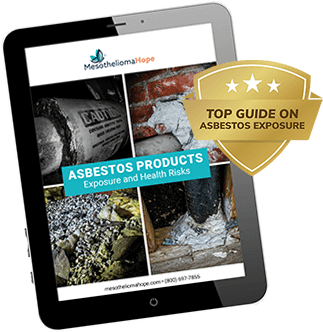Asbestos in Pipes
Asbestos was a primary component in pipe works starting in the late 1800s. The government banned it in the late 1980s.
For years, there’d been warnings about health risks for people exposed to airborne asbestos fibers emitting from pipes and other asbestos-containing materials (ACM).
However, asbestos was extremely valuable in pipe manufacturing. It finally took pressure from government regulators like the Environmental Protection Agency (EPA) and the Occupational Safety & Health Administration (OSHA) to phase out asbestos materials in residential, commercial and industrial piping.
Asbestos Materials in Pipes
Pipe manufacturing and pipe fitting used asbestos-containing materials in two ways.
Two ways pipe manufacturing used asbestos materials were:
- Within pipe material where ACM constructed the pipe walls.
- In pipe wrapping which insulated exposed pipes and added fireproof properties.
Asbestos seemed the ideal material for pipe making and pipe wrapping. Asbestos fibers were lightweight while adding tensile strength to all sizes of pipes. Asbestos fibers were also very smooth. This characteristic gave pipes’ inner walls a slick surface, reducing friction and lowering pumping efforts.
Asbestos was non-combustible, making it the ideal material for fireproofing fuel lines in ships and factories.
ACMs were non-corrosive. This characteristic allowed asbestos pipes to survive direct burial and contact with rust-causing minerals native in soils.
Asbestos additives lowered electrical conductivity in steel pipes making them safer around direct current and static charges. Further, asbestos was chemically inert and easy to blend with other pipe-making materials. Asbestos was widely available and inexpensive to purchase as well.
Types of Asbestos-Containing Pipes
Two pipe types primarily contained asbestos materials.
The first was steel pipes in high-pressure situations. Steel composition usually had 10 to 15 percent asbestos in the pipe walls. However, air-cell insulation containing 100 percent asbestos paper and fibers wrapped many steel pipes.
The other primary ACM pipe type was concrete construction.
Designated Asbestos-Cement (A-C) products, these pipes were generically branded “Transite.”
Most A-C pipes were installed in underground passive applications for storm and sewer drains, but Transite piping was also often used for pressurized potable water systems.
From the early 1900s until the 1980s, workers cut, fit and buried countless miles of Transite pipes across America. A-C pipes had an estimated service life of 50 to 70 years. Many Transite pipes are now failing and need replacing. It’s the same situation with steel ACM pipes and their friable wraps.
ACM Pipes and Asbestos Exposure
Asbestos materials are quite safe and stable once installed and left alone. The danger of asbestos exposure came from working with raw asbestos materials when manufacturing
ACM pipe or disturbing fibers during installation or removal. Old, exposed ACM pipes and wraps were also highly dangerous for emitting airborne asbestos fibers.
Dried asbestos became brittle and easily crumbled into fine dust particles. This condition is called friable and presented the highest risk for airborne asbestos exposure.
Pipe making used two different asbestos materials:
- Chrysotile fibers: Regular temperature and low-pressure pipes contained chrysotile or white asbestos. Chrysotile fibers were serpent-like and soft. They’re dangerous to inhale.
- Amphibole fibers: High-heat and high-pressure pipes used amphibole asbestos fibers, which are far deadlier than chrysotile fibers. Amphibole fibers were crystalline forms with hard, sharp spikes on their particles.
ACM Pipe Exposure and Mesothelioma
When workers inhaled airborne asbestos fibers, these tiny particles embedded into the lung lining or what’s called the mesothelium.
Asbestos fibers attached to the mesothelium and didn’t expel. They remained firmly fixed on the lung lining and stayed there forever.
Over time, scar tissue formed over asbestos irritants as part of the body’s natural defense or immune system.
Amphibole asbestos fibers were far more irritating than chrysotile fibers due to their rough form. Exposure to amphibole asbestos was particularly deadly.
However, sufficient exposure to chrysotile fibers over a long time had the same effect. There’s an extended latency period of 10-50 years, but eventually, scar tissue turned into tumors and caused the fatal disease known as mesothelioma.
Compensation for Mesothelioma Victims
Unfortunately, there is no cure for advanced-stage mesothelioma. The only condolence is seeking compensation from negligent ACM pipe manufactures and other producers of asbestos products.
Compensation includes payments for lost income, medical expenses, and personal injury. Families can sue on behalf of mesothelioma victims including filing wrongful death lawsuits.



